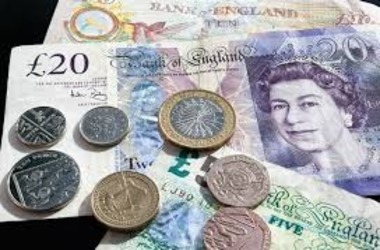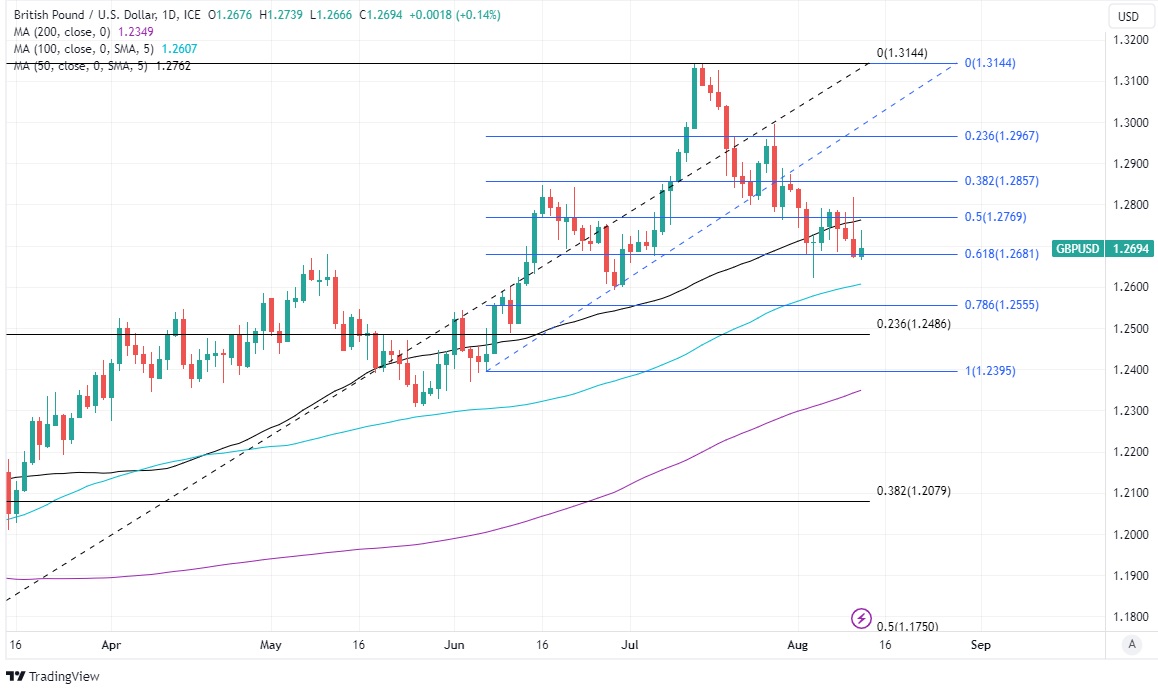 Introduction:
Introduction:
The Pound to Dollar exchange rate retraced a portion of its earlier gains heading into the weekend, as financial markets grappled with the implications of robust producer price inflation figures for July. The unexpected strength in these figures led to increased speculation regarding the trajectory of the inflation metric that holds significant importance for the Federal Reserve (Fed).
Dollar Strengthens on Surging Producer Price Inflation:
Throughout Friday’s trading session, dollar rates experienced an upward trajectory. This ascent was further pronounced as trading came to a close in European markets. The Bureau of Labor Statistics revealed that both monthly gauges of companies’ production costs recorded a 0.3% increase last month, a notable deviation from the economist consensus of 0.2% for each indicator.
Ryan Brandham, the head of global capital markets at Validus Risk Management, observed that this outcome could signify an ongoing battle against inflation in the United States. He also noted that this development might bolster the USD’s performance on that day and contribute to elevated US yields.
Concerns Arise Over Persistent Inflation Pressures:
The recently released Producer Price Index figures, which reflect shifts in wholesale goods costs, suggested a resurgence of price pressures in July. This prompted discussions among economists regarding the possibility of a similar pattern manifesting in the forthcoming edition of the core Personal Consumption Expenditures Price Index.
The core Personal Consumption Expenditures (PCE) Price Index, the favored inflation gauge of the Fed, saw its monthly pace drop to 0.2% in June, down from the previous 0.3%. Consequently, the annual rate reached 4.1%, positioning it within reach of the US’s two percent average inflation target.
David Mericle, the chief US economist at Goldman Sachs, extrapolated from the details of the PPI and CPI reports to estimate that the core PCE price index likely rose by 0.22% in July, translating to a year-over-year rate of +4.25%. Additionally, he anticipated that the headline PCE price index increased by 0.22% in July, marking a 3.29% rise compared to the previous year.
Dollar Resilience and Consumer Confidence:
Despite a later-reported dip in consumer confidence according to the University of Michigan’s survey, the dollar’s strength persisted. The decline in both short and long-term inflation expectations during August, as indicated by the survey’s details, did little to deter the dollar’s momentum.

Ian Shepherdson, chief US economist at Pantheon Macroeconomics, pointed out that the Michigan survey heavily factors in perceptions of personal finances, which are likely to be affected by the resumption of student loan debt repayments in October. While the stickiness of the Michigan number raised concerns about the Fed’s desire for reduced long-term inflation expectations, Shepherdson highlighted that such expectations are influenced by the current rate of headline inflation.
Mixed Inflation Readings and Monetary Policy Speculations:
The recent data followed closely on the heels of July’s consumer price index inflation report, released just a day earlier. The findings indicated a moderate rebound in both overall and annual measures of price growth for the past month. The former rose from 3% to 3.2%, while the latter surprised by aligning with the lower end of expectations.

Core inflation, which excludes volatile energy and food prices and is closely monitored by central bankers, retreated from 4.8% to 4.7% in July. This defied projections that it would remain unchanged. James Knightley, the chief international economist at ING, wrote in a Friday commentary that market skepticism persists regarding the Fed’s commitment to the final interest rate hike forecasted in their June update. He foresees the Fed maintaining rates through early 2024 and possibly implementing a rate cut as early as March.
Impact on Sterling and BoE Outlook:
For the Pound to Dollar exchange rate, the data released on Friday subdued the earlier rally sparked by stronger-than-expected UK economic growth figures. This left the Pound grappling for support near a significant technical level on the charts ahead of the weekend.
Stephen Gallo, a global FX strategist at BMO Capital Markets, emphasized the significance of upcoming data releases for both markets and the Bank of England (BoE). He noted that GBP positions appear stretched based on recent data, cautioning that structural factors, the extent of monetary tightening, and other potential developments could contribute to the medium-term outlook for the sterling.
In conclusion, the US Dollar gained traction fueled by concerns surrounding robust producer price inflation figures. The implications for the Federal Reserve’s preferred inflation metric and its potential impact on monetary policy decisions have sparked discussions among economists and market participants alike.




